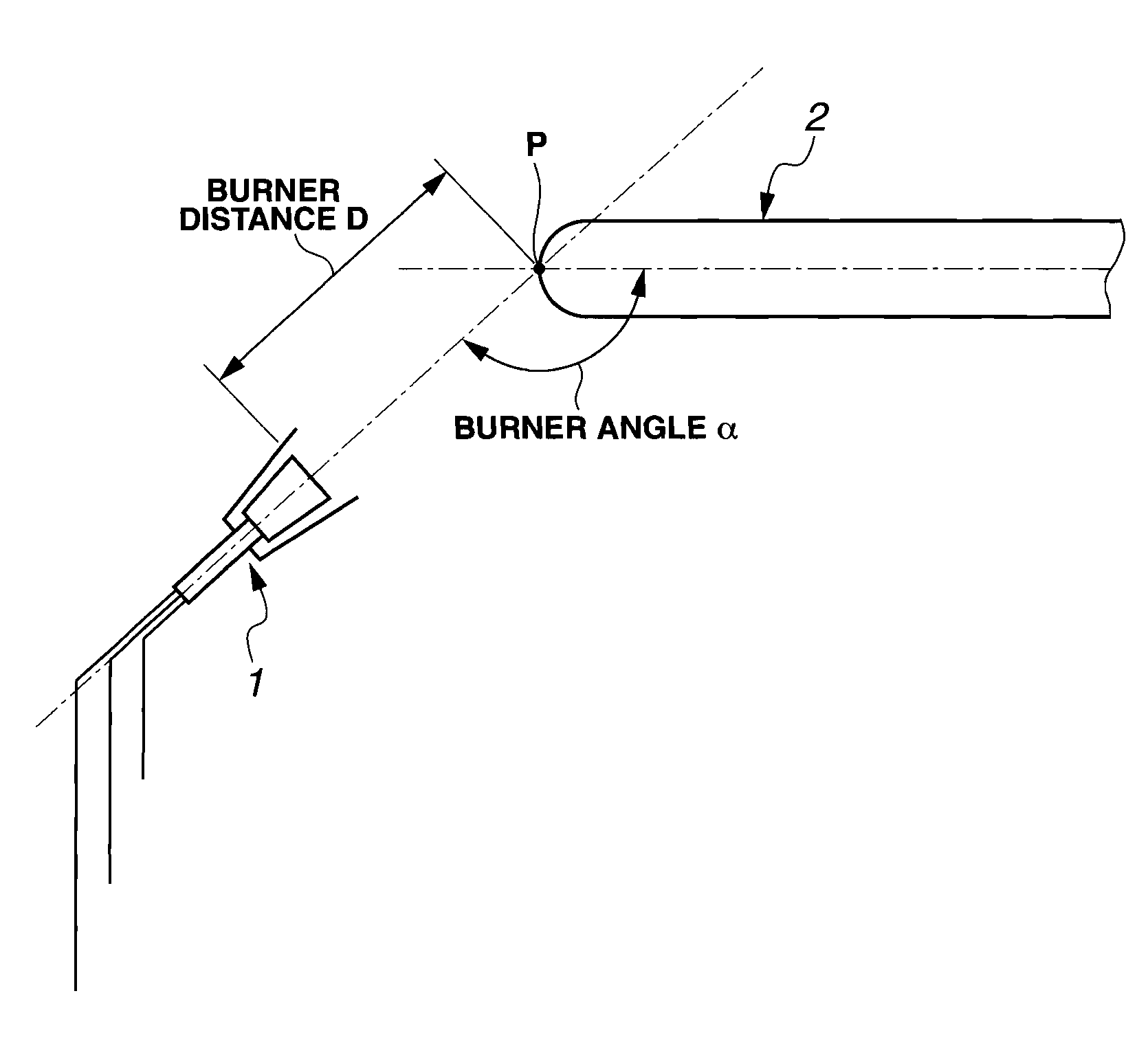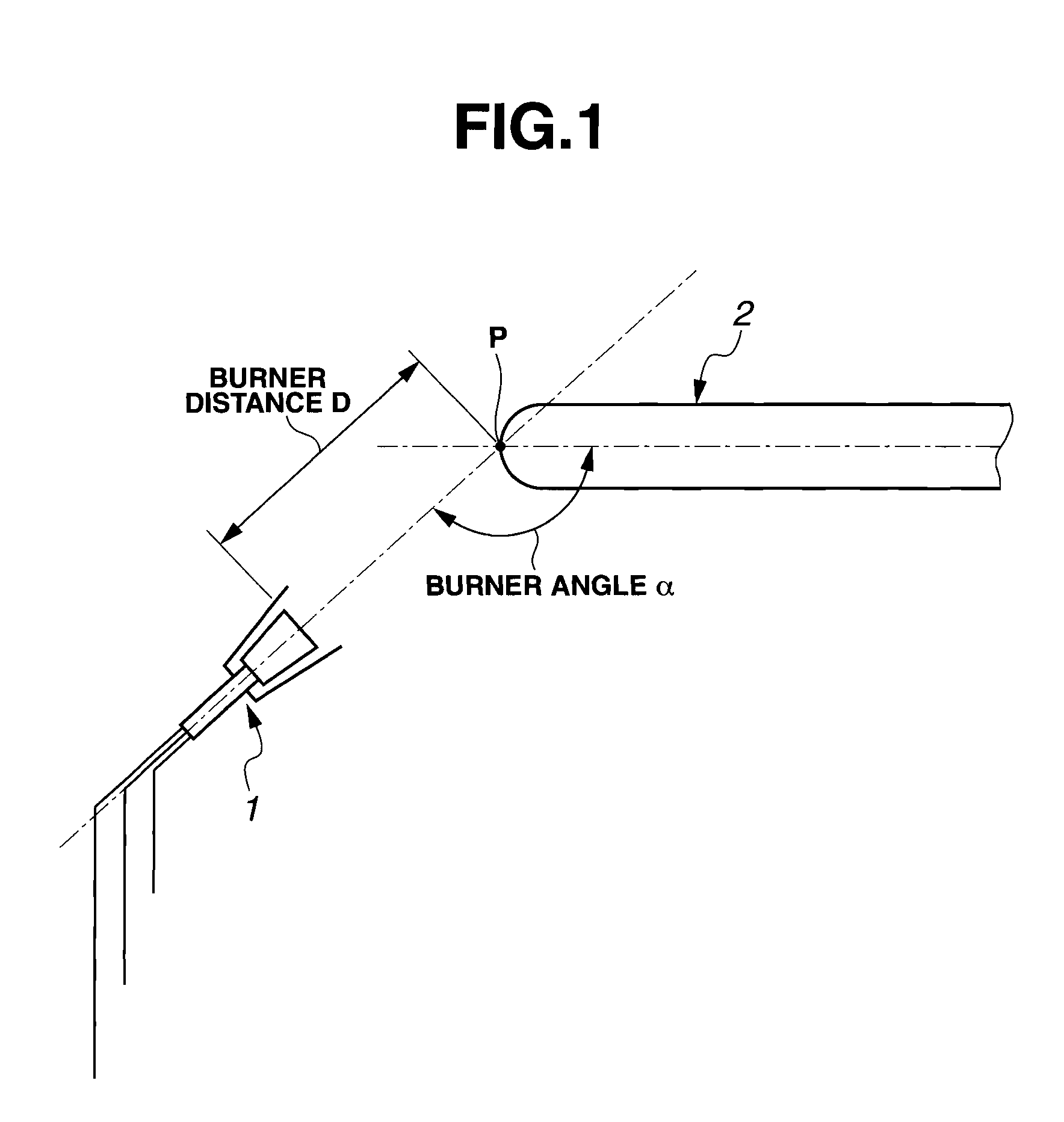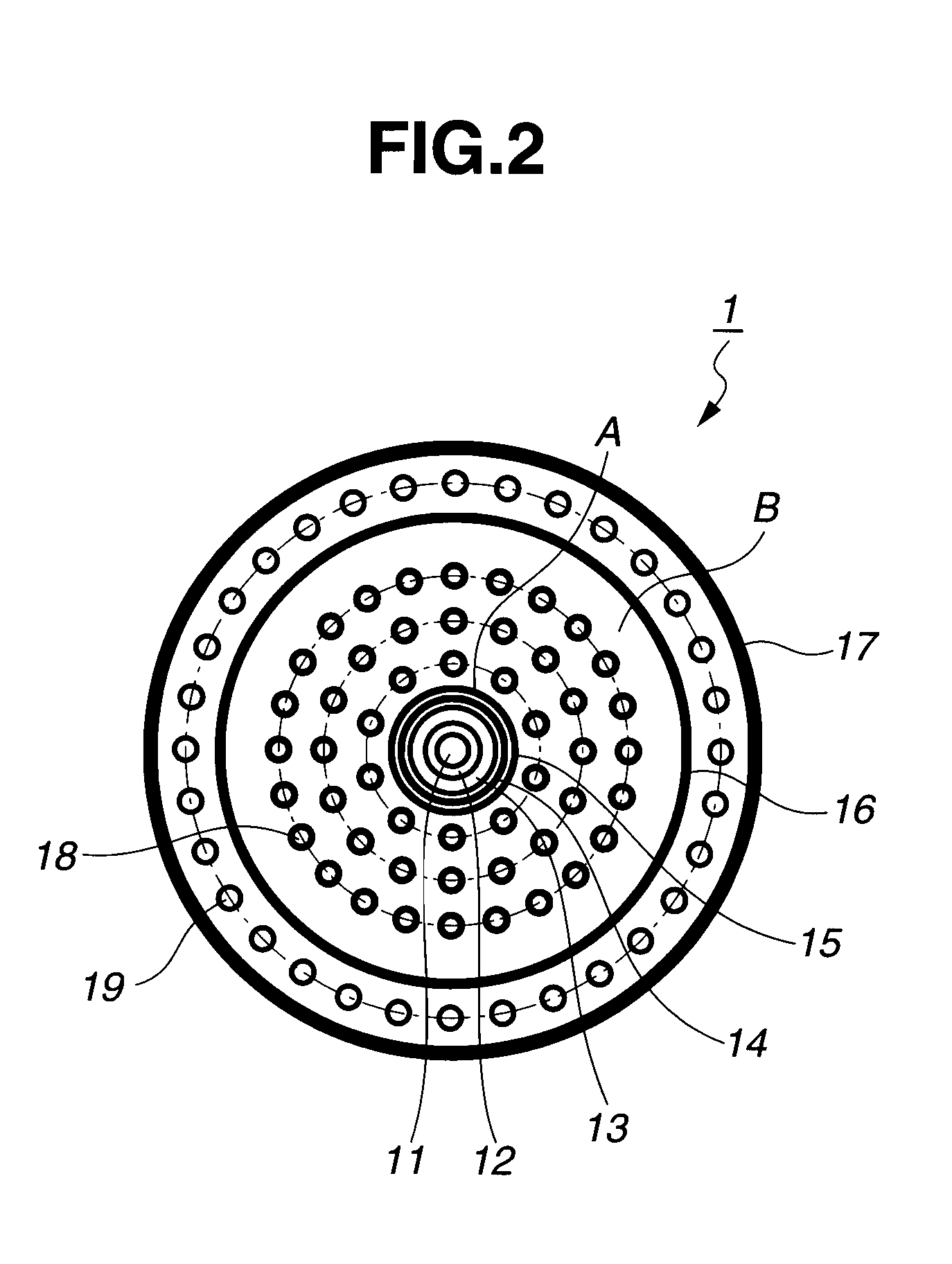Titania-doped quartz glass and making method
a technology of quartz glass and doped glass, which is applied in the direction of glass deposition burners, manufacturing tools, instruments, etc., can solve the problems of quartz glass undergoing thermal hysteresis, glass having a tiosub>, and specific ranges that are still insufficien
- Summary
- Abstract
- Description
- Claims
- Application Information
AI Technical Summary
Benefits of technology
Problems solved by technology
Method used
Image
Examples
example 1
[0081]A titania-doped quartz glass ingot was prepared by using a furnace including a burner as shown in FIG. 2, feeding gases (SiCl4, TiCl4, O2, H2) to respective nozzles of the burner as shown in Table 1, forming an oxyhydrogen flame, effecting oxidation or flame hydrolysis of silicon tetrachloride and titanium tetrachloride in the oxyhydrogen flame to produce SiO2 and TiO2, depositing silica and titania fine particles on a target, and concurrently melting and vitrifying the particles. The target was disposed forward of the burner, rotated at 50 rpm, and retracted at 10 mm / hr. The burner and the target were relatively set at a burner distance and a burner angle as shown in Table 1. Table 1 also reports a H2 / O2 ratio and a linear velocity of hydrogen gas flows in the central multi-fold tube section and the multi-nozzle section under the process conditions. The flow rates of respective gases were kept at a variation of ±0.2% by volume. During preparation of titania-doped quartz glass...
examples 2 , 3 , 4 , 6
Examples 2, 3, 4, 6, and Comparative Examples 1, 2
[0087]Titania-doped quartz glass ingots were prepared with the gas flow rates, burner distance and burner angle set as described in Table 1. The remaining conditions were the same as in Example 1.
example 5
[0088]A titania-doped quartz glass ingot was prepared with the gas flow rates, burner distance and burner angle set as described in Table 1. After the ingot was shaped, it was annealed in a muffle furnace of ceramic fiber body by holding in air at 1,120° C. for 150 hours and slowly cooling at a rate of 5° C. / hr to 500° C. The remaining conditions were the same as in Example 1.
[0089]The titania-doped quartz glass samples prepared in Examples 1, 2 and 3 displayed better values of absorption edge wavelength distribution, absorption edge wavelength position, apparent transmittance at 350 to 800 nm, total content of metal impurities, hydrogen molecule concentration, TiO2 concentration, zero expansion temperature, fictive temperature, fictive temperature distribution, OH group concentration reduction and OH group concentration after 900° C. / 100-hr heat treatment. They were satisfactory as the EUV lithography member.
[0090]The titania-doped quartz glass sample prepared in Example 4 displaye...
PUM
| Property | Measurement | Unit |
|---|---|---|
| distance | aaaaa | aaaaa |
| angle | aaaaa | aaaaa |
| linear velocity | aaaaa | aaaaa |
Abstract
Description
Claims
Application Information
 Login to View More
Login to View More - R&D
- Intellectual Property
- Life Sciences
- Materials
- Tech Scout
- Unparalleled Data Quality
- Higher Quality Content
- 60% Fewer Hallucinations
Browse by: Latest US Patents, China's latest patents, Technical Efficacy Thesaurus, Application Domain, Technology Topic, Popular Technical Reports.
© 2025 PatSnap. All rights reserved.Legal|Privacy policy|Modern Slavery Act Transparency Statement|Sitemap|About US| Contact US: help@patsnap.com



